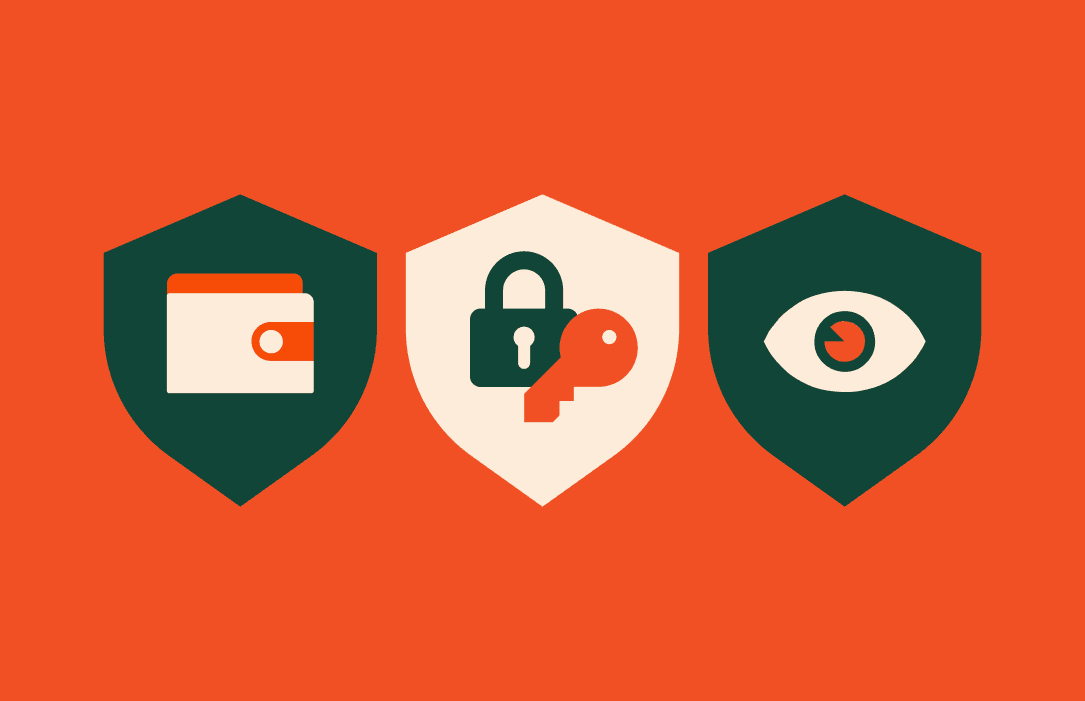Strong online security habits are a lot like smoke alarms: you set them up, maintain them, and they work quietly in the background to keep you safe. And if used right, they will alert you when something seems wrong. These habits should be followed whether you are protecting your email password or access to your bank account. Crypto is no different: a handful of repeatable routines you set up at the start will protect your digital assets. Let’s review these good habits together.
Lock down entry points
Start with the accounts you visit every day. Turn on two-factor authentication for every exchange, wallet, and recovery email. An authenticator app, like the free Google Authenticator, is safer than text messages because it can’t be hijacked if someone gets hold of your phone number, but authenticating text messages is better than no two-factor authentication at all. Some users even create a separate email address just for financial sites so that if a social-media leak ever occurs, their financial email address stays safe.
Verify URLs
Phishing schemes are masters of disguise. They can clone a logo, match support-chat pop-ups, and register domain names that differ by a single character. Beat them by bookmarking official pages for every service you depend on—then always reach those services through the bookmark bar, never through a link in an ad or direct message (DM). Internet browsers flash warnings for fishy-looking sites, but those alerts work only if you have them activated. A quick glance at the URL address bar can prevent a security issue later.
Keep “hot” and “cold” money in the right places
A hot wallet is an app or browser extension that stays online and works like a checking account. It’s perfect for managing smaller expenses like daily spending, small trades, or splitting dinner. Larger balances belong in cold storage, where private keys remain offline until you plug in a hardware wallet.
During setup, you’ll receive a “seed phrase,” which is a 12 or 24-word recovery phrase that acts as a master key, giving you access to your wallet even if you lose the hardware device or forget your password. Hand-write your seed phase somewhere safe and store it in two separate secure spots (think a fire-safe at home and a bank deposit box), and never take a photo of it with your phone.
To recap: keep your coins online in hot wallets for quick and easy access, store your bigger savings offline in cold wallets, and always have a paper backup of your seed phrase in case of any issues. If that all seems too complicated, storing your crypto with a trusted exchange provides good security, as long as you follow the other advice in this article.
Test before you trust large transfers
Blockchains are unforgiving of typos. A single wrong character in a wallet address can send funds into limbo forever. Whenever you pay a brand-new address, send a tiny test amount first. Wait for confirmation, verify the recipient sees it, then move the full balance. One extra minute prevents an irreversible mistake.
Keep software and firmware current
Phone makers fix bugs to keep your info safe, wallet apps get stronger to stop hackers, and hardware wallets get updates so new tricks can’t fool them, so let your laptops and phones install updates automatically overnight. Also, plug your hardware wallet into its dashboard every few weeks to check for firmware notices, and delete browser extensions you no longer use as abandoned plug-ins sometimes get repurposed by attackers looking for a shortcut onto your machine.
Guard your keys and phrases
Your recovery phrase or private key plus with your password (or pin if you use a cold wallet) will unlock your digital assets. Never store either in a cloud drive, email draft, or phone screenshot. If you want a digital backup, use encrypted storage on a device that never connects to the internet, or better still, write the phrase on durable paper, seal it, and store it safely. Keep antivirus tools active, close extra browser tabs before making transactions, and avoid public Wi-Fi when accessing your crypto—healthy devices help protect healthy wallets. If anyone claiming to be “support” asks for your key or phrase, end the conversation immediately; legitimate companies will never request it.
Stay skeptical of “too good to be true”
Crypto scammers recycle the same tactics used in traditional fraud: urgency and promises of guaranteed profit. They might offer double-digit weekly yields or warn that your wallet will freeze unless you act now. Pause, open a new browser tab, and check the official site or social-media feed yourself. Real opportunities wait; fake ones vanish when you try and verify the info.
Review activity regularly
Reviewing a bank statement catches fraud early, and the same works for crypto. Glance through your wallet history every week. Many mobile wallets push notifications whenever funds leave, so leave those alerts on. You can also use blockchain scanners or create a new wallet to transfer your funds if you believe your current wallet may be compromised.
Keep learning
Blockchains evolve quickly, and so can attackers. Follow reputable sources—including the National Cryptocurrency Association’s learning hub—for guidance on how to keep your crypto secure. The more familiar these habits become, the less effort they require and the safer your digital assets will be.
The bottom line
Crypto’s freedom comes with personal responsibility, but that doesn’t mean you need a computer-science degree to manage your coins. Just remember to:
Enable two-factor authentication
Bookmark official sites
Split holdings between hot and cold storage or use a trusted exchange
Keep recovery phrases offline
Test small before sending big
These are common practices you already use every day. Now, they play an even more important role in protecting your digital assets. By making them part of your crypto hygiene routine, you’ll stay confident and fully in control.
